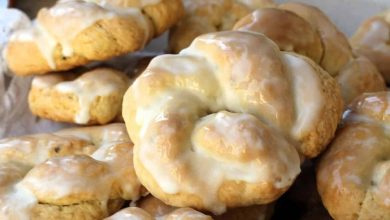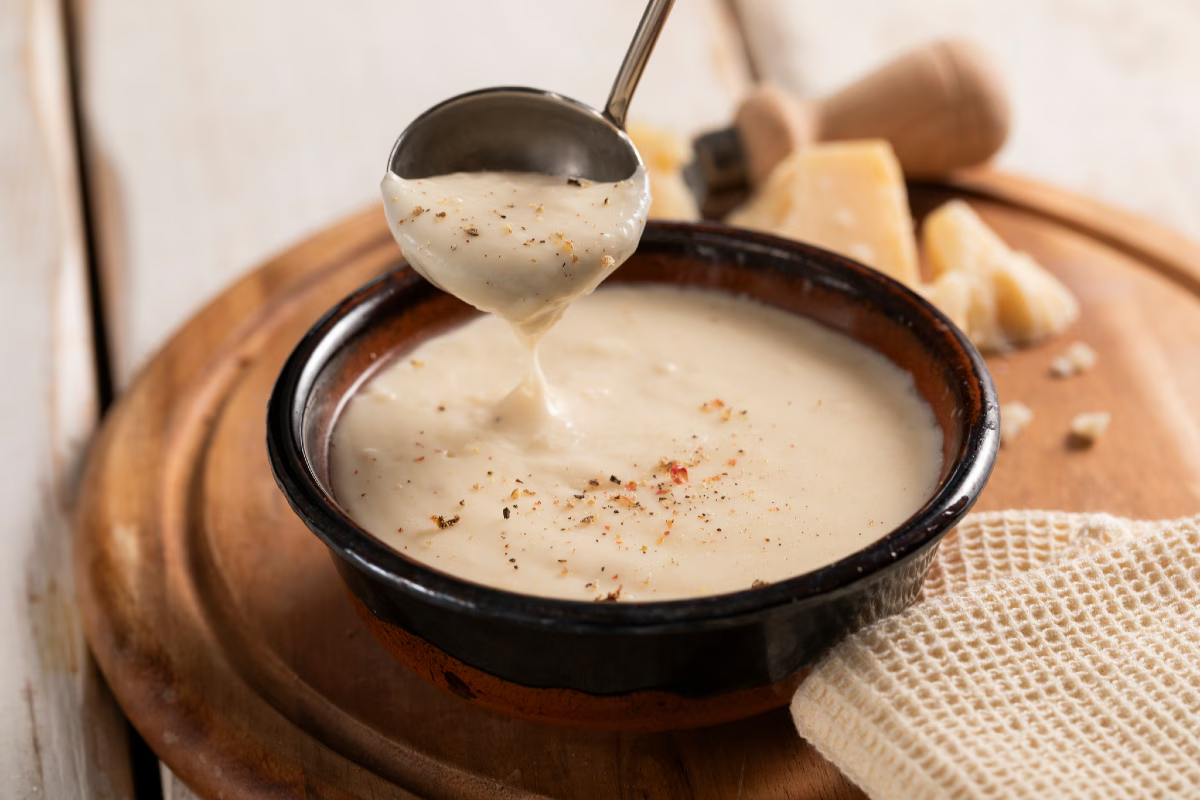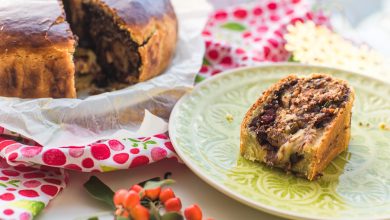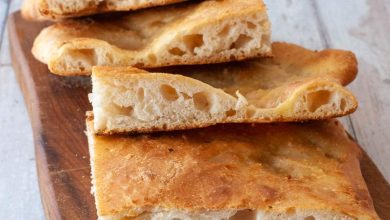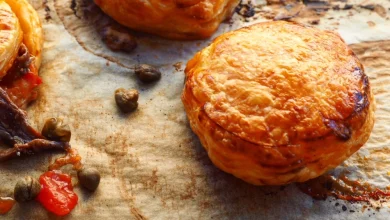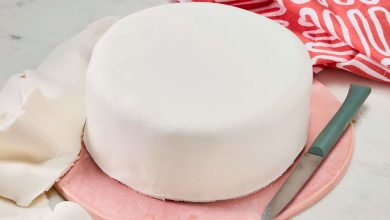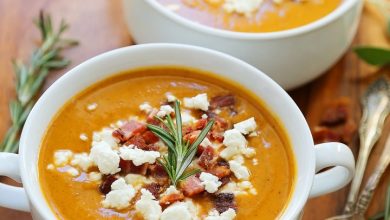Honey-Glazed Mostaccioli Calabresi: Traditional Italian Biscuit Recipe
Introduction
Mostaccioli Calabresi, a cherished Italian delicacy originating from the sun-kissed region of Calabria, embodies the rich culinary heritage of southern Italy. These honey biscuits are a testament to the region’s love for natural sweetness, combining the floral aroma of millefiori honey with a tender, flavorful dough. Traditionally enjoyed during festivals, family gatherings, and special occasions, these biscuits are more than just a treat—they are a symbol of cultural identity and artisanal craftsmanship. Their golden, glossy exterior, infused with the deep, aromatic notes of honey, contrasts beautifully with their soft, chewy interior. Crafted with simple ingredients, yet resulting in an intricate, layered flavor profile, Mostaccioli Calabresi offer a delightful experience for both the eye and palate. As you embark on recreating this regional classic, you’ll uncover the secrets behind the perfect dough consistency, the art of glazing, and how to elevate these biscuits with personalized touches. This comprehensive guide, brought to you by Love With Recipes, aims to walk you through every step of making authentic Mostaccioli Calabresi, ensuring a rewarding baking experience that captures the essence of Calabria’s sweet traditions.
Time
Preparation Time
20 minutes
Cooking Time
35 to 40 minutes
Total Time
Approximately 1 hour
Needed Equipment
- Large mixing bowl
- Fine-mesh sifter or sieve
- Fork or wooden spoon
- Measuring cups and spoons
- Kitchen scale (for precise portioning)
- Bench scraper or dough cutter
- Parchment paper
- Baking sheet or tray
- Pastry brush (for glazing)
- Cooling rack
- Small piping bag or plastic sandwich bag (optional, for decorative dough)
- Food thermometer (optional, for oven calibration)
Tags
- Italian desserts
- Honey biscuits
- Calabria cuisine
- Traditional recipes
- Festive baking
- Homemade sweets
Serving Size
Each batch yields approximately 7 large biscuits, with each biscuit serving as a substantial treat. The standard serving size is 1 biscuit, which is perfect for sharing or enjoying as a hearty snack.
Difficulty Level
Intermediate: Requires some experience with dough handling and baking techniques, but accessible for home bakers with basic culinary skills.
Allergen Information
| Allergen | Contains |
|---|---|
| Gluten | Yes (all-purpose flour) |
| Eggs | Yes (egg yolks) |
| Honey | Yes (millefiori honey) |
| Possible cross-contamination | Depends on manufacturing process of ingredients |
Dietary Preference
Vegetarian. Not suitable for vegans due to the presence of eggs and honey. Can be adapted for gluten-free diets if using suitable flour substitutes, though the texture may vary.
Course
Dessert, Snack, Festive treat
Cuisine
Italian, Calabrian
Ingredients
In-depth Ingredient Details
| Ingredient | Quantity | Description & Notes |
|---|---|---|
| Millefiori honey | 500g | Floral, aromatic honey typical of Calabria; essential for authentic flavor and glossy glaze |
| All-purpose flour (00) | 550g | Fine Italian flour that creates a tender yet firm dough; can substitute with standard all-purpose flour if necessary |
| Egg yolks | 3 large | Provides richness and helps bind the dough; use fresh eggs for best flavor |
| Baking powder | 8g (about 2 teaspoons) | Leavening agent that contributes to the biscuit’s slight rise and airy texture |
| Millefiori honey (for glazing) | 200g | Additional honey used after baking for a shiny, sweet coating |
| Sprinkles (Codetta) | to taste | Optional decorative sugar sprinkles, typical in Calabrian sweets, adding texture and visual appeal |
| All-purpose flour (for dusting) | as needed | To prevent sticking during shaping and rolling |
Instructions
Step 1: Prepare the Dough
Begin by setting up your workspace with all necessary tools and ingredients. Sift the 550 grams of all-purpose flour along with the 8 grams of baking powder into a large, clean mixing bowl. Sifting is a crucial step that aerates the flour, removing any lumps and ensuring a light, tender biscuit. Use a fine-mesh sifter or sieve, holding it over the bowl and tapping gently to distribute the flour evenly. Once sifted, create a well in the center of the flour mixture. Carefully crack the three large egg yolks into the well, avoiding the whites unless specified for other recipes. Pour in the 500 grams of millefiori honey, which has been measured precisely for consistency. The honey should be at room temperature to facilitate mixing. This initial step sets the foundation for a cohesive dough, with the honey imparting its characteristic floral aroma and sweetness. It’s advisable to have your ingredients measured and ready to streamline the process, especially if you’re aiming for precision and uniformity in your biscuits.
Step 2: Mixing the Ingredients
Using a fork or a wooden spoon, gently begin to incorporate the flour into the egg yolks and honey. Start by pulling a small amount of flour from the inner rim of the well and mixing it into the wet ingredients. This gradual process prevents the mixture from splattering and helps achieve a smoother consistency. As the flour begins to combine, slowly pour in the remaining honey in a controlled stream, facilitating better integration into the dough. For those who prefer a more hands-on approach, you can switch to using your fingers or a dough scraper to mix the ingredients thoroughly. The goal is to form a sticky, cohesive mass without overworking the dough, which could lead to a tough texture. If the mixture appears too wet or sticky, sprinkle in additional flour, a tablespoon at a time, until it becomes manageable while still retaining moisture for tenderness. Proper mixing ensures an even distribution of ingredients, vital for consistent baking results.
Step 3: Knead the Dough
Transfer the dough onto a lightly floured surface, which prevents sticking and makes kneading easier. Use a bench scraper or your hands to gather the dough into a compact ball. Begin kneading gently, pressing the dough with the heel of your hand, folding it over, and turning it 90 degrees after each fold. Continue this process for about 5-7 minutes, until the dough feels soft, elastic, and uniform in texture. During kneading, if the dough feels too sticky, dust lightly with flour; if it’s too dry or crumbly, sprinkle with a few drops of water. The aim is to develop a smooth, pliable dough that can be easily shaped without cracking. Proper kneading develops gluten strands, which contribute to the biscuit’s structure and chewiness. Resting the dough for a few minutes after kneading can also help relax the gluten, making it easier to shape.
Step 4: Shape the Biscuits
Divide the dough into approximately 7 equal portions, each weighing around 140 grams. Use a kitchen scale for accuracy, especially if you’re aiming for uniform size and presentation. Roll each portion into a log or oval shape, about 10-12 centimeters long, depending on your preference. The shape can be slightly flattened or rounded, but maintaining consistent size ensures even baking. If you wish to add decorative elements, such as thin ropes or curls, set aside small pieces of dough and shape them accordingly. These decorative touches will create a more artisanal appearance and add textural variety. Place each shaped biscuit on a baking sheet lined with parchment paper, leaving enough space between each for expansion during baking. Gently flatten the tops if desired for a more traditional look or leave them rounded for a rustic appearance.
Step 5: Decorate and Prepare for Baking
Before baking, you can add decorative details to your biscuits. Using a small piping bag or a plastic sandwich bag with the tip cut off, pipe thin ropes or small curls of leftover dough onto the biscuits for added visual interest. This step is optional but highly recommended for a more festive presentation. Additionally, sprinkle some sugar sprinkles or Codetta over the surface for a crunchy, sweet topping that complements the honey glaze. These decorations will melt and set during baking, creating an appealing textured surface. Arrange the biscuits evenly on the baking tray, ensuring they do not touch to allow for even heat distribution.
Step 6: Bake
Preheat your oven to 180°C (350°F) in static mode or to 160°C (320°F) if using a fan-assisted oven. Allow the oven to fully heat to ensure even baking. Place the baking sheet in the center of the oven and bake the biscuits for 35-40 minutes. The biscuits should develop a deep golden-brown hue, indicating they are fully baked. The surface should be firm to the touch, and the edges slightly crisp. To check for doneness, gently tap the top—if it sounds hollow, they are ready. Keep a close eye during the last few minutes, as overbaking can dry out the biscuits, diminishing their tender, chewy interior. If you prefer a softer biscuit, reduce the baking time slightly, monitoring closely to prevent burning.
Step 7: Glaze with Honey
Once baked, remove the biscuits from the oven and immediately brush them with the 200 grams of millefiori honey. Use a pastry brush to evenly coat each biscuit, allowing the honey to melt into the surface and create a beautiful glossy finish. The heat from the biscuits will help the honey seep into the surface, enhancing both flavor and appearance. For an extra touch of sweetness, sprinkle additional Codetta or sugar sprinkles while the glaze is still warm, ensuring they adhere well. The honey glaze not only adds visual appeal but also seals in moisture, keeping the biscuits soft and aromatic. Allow the glazed biscuits to rest on the baking sheet for about 10 minutes to set the glaze before transferring them to a cooling rack.
Step 8: Cool and Serve
Transfer the biscuits to a wire cooling rack and let them cool completely. As they cool, the honey glaze will set further, resulting in a sticky, shiny exterior that is truly irresistible. Once cooled, you can serve Mostaccioli Calabresi as a standalone dessert, or pair them with a variety of accompaniments such as a cup of espresso, a glass of sweet wine like Vin Santo, or even a drizzle of additional honey for those with a sweet tooth. These biscuits can be stored in an airtight container at room temperature for up to a week, or longer if refrigerated. Their flavor and texture are best enjoyed within the first few days, but they still retain deliciousness even after storage.
Preparation Tips
- Ensure your honey is at room temperature for easier mixing and glazing.
- If the dough feels too sticky, dust with a small amount of flour; if too dry, add a few drops of water or milk.
- Use a kitchen scale for precise portioning to ensure uniform baking results.
- Rest the shaped dough for 10-15 minutes before baking to improve texture and ease handling.
- For a more authentic flavor, consider adding a teaspoon of citrus zest (lemon or orange) to the dough.
- Use high-quality millefiori honey, as it is the star ingredient that defines the biscuit’s flavor.
Nutritional Information
| Nutrient | Per Serving (1 Biscuit) |
|---|---|
| Calories | Approx. 300 kcal |
| Carbohydrates | 50g |
| Protein | 4g |
| Fat | 10g |
| Fiber | 1g |
| Sugar | 20g (from honey and sprinkles) |
Tips and Tricks
- Use a high-quality, floral millefiori honey to achieve authentic flavor and a beautiful glaze.
- Adjust baking time based on your oven—start checking at 35 minutes to prevent over-baking.
- For a more textured surface, sprinkle crushed nuts or chopped candied citrus peel before baking.
- To make the biscuits more festive, add edible gold leaf or colored sprinkles on top after glazing.
- If you prefer a less sweet version, reduce the honey in the dough slightly and increase the baking time for a crispier biscuit.
Add-ons
- Chopped candied citrus peel for a citrusy kick
- Chopped nuts (almonds, pistachios) for added crunch
- Dark chocolate chips or chunks for a decadent variation
- Infusion of spices such as cinnamon, cloves, or nutmeg for a spiced flavor profile
Side Dishes
- Fresh fruit compote or berry coulis for a refreshing contrast
- Sweet mascarpone or ricotta cream as a dip or topping
- Assorted Italian cookies and biscotti for a dessert platter
- A small glass of dessert wine (Vin Santo, Moscato) to complement the sweetness
Improvements
- Experiment with different honey varieties for diverse flavor profiles
- Add a splash of liqueur such as Grand Marnier or Limoncello to the dough for a boozy twist
- Incorporate ground spices or herbs into the dough for a nuanced taste
- Use a combination of flours (such as almond or chestnut) to alter the texture and flavor
Save and Store
Store the cooled biscuits in an airtight container at room temperature for up to 7 days. For longer storage, keep them refrigerated in a sealed container for up to two weeks. To maintain their glossy appearance and freshness, reheat briefly in a warm oven before serving. The honey glaze will harden over time, but gently warming will restore its shine and stickiness. For gifting, wrap individual biscuits in parchment paper or place in decorative tins, ensuring they are layered with parchment to prevent sticking.
FAQ
Can I make these biscuits gluten-free?
Yes, by substituting the all-purpose flour with a gluten-free flour blend that contains xanthan gum or a similar binder, you can adapt this recipe. Keep in mind that the texture might differ slightly and may require adjustments in baking time.
Can I use other types of honey?
Absolutely. While millefiori honey provides a distinctive floral aroma, alternative honey varieties such as acacia, chestnut, or orange blossom can be used to impart different flavor nuances. Experimenting with honey types allows you to customize the biscuits to your taste preferences.
What is the best way to ensure even baking?
Use an oven thermometer to verify your oven’s temperature accuracy. Rotate the baking sheet halfway through baking to promote uniform heat distribution. Additionally, maintaining consistent dough portion sizes ensures even baking and presentation.
Can I freeze the baked biscuits?
Yes. Once cooled completely, store the biscuits in an airtight container or vacuum-sealed bag. They can be frozen for up to 3 months. Thaw at room temperature and re-glaze with honey if desired to restore shine.
Conclusion
Recreating Mostaccioli Calabresi at home allows you to indulge in a piece of Calabria’s culinary heritage, celebrating the harmonious blend of natural honey, simple ingredients, and artisanal craftsmanship. The process, from preparing the fragrant dough to glazing with luscious honey, offers a rewarding baking journey that culminates in a beautifully glossy, aromatic biscuit. Whether served during festive gatherings or enjoyed as a comforting treat with a cup of espresso, these biscuits embody the warmth, tradition, and sweetness of Southern Italy. Remember, the key to perfection lies in quality ingredients, patience during mixing and baking, and a touch of personal flair. Share these homemade delights with loved ones, and let the aroma of honey fill your kitchen with the essence of Calabria. For more authentic recipes and culinary inspiration, visit Love With Recipes, your trusted platform for culinary adventures.
References
- “Calabrian Cuisine: Traditional Recipes and Culinary Heritage,” Calabria Food & Culture, 2020.
- “The Art of Honey in Italian Baking,” Journal of Italian Food Science, 2019.

